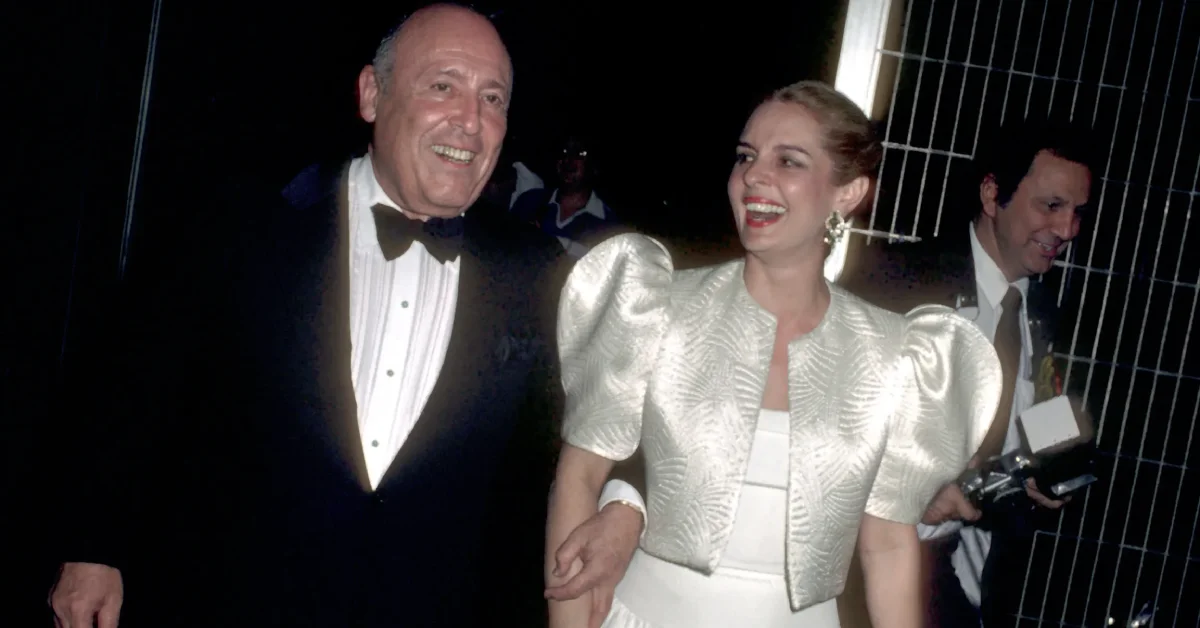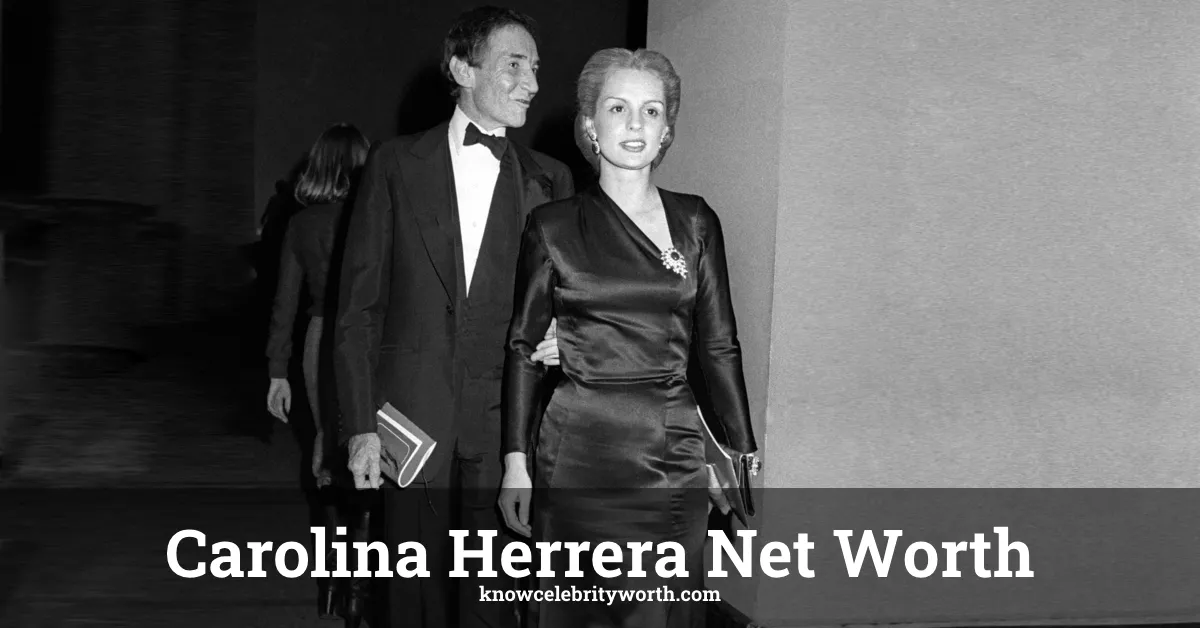Carolina Herrera stands as one of fashion’s most remarkable success stories. The Venezuelan-American designer transformed her keen eye for style into a global brand worth $1.2 billion in 2025. But how much of that wealth belongs to Herrera herself? And what’s the story behind her journey from socialite to fashion powerhouse?
With a personal fortune of $130 million, Carolina Herrera has created a legacy that spans decades. Her story isn’t just about numbers – it’s about business savvy, creative vision, and staying relevant in fashion’s constantly changing landscape.
Let’s unpack how Carolina Herrera built her wealth, what drives her brand’s success today, and why her business approach continues to work in 2025’s competitive luxury market.
Carolina Herrera Net Worth of $130M in 2025
Carolina Herrera’s net worth sits at approximately $130 million in 2025, a figure that reflects her decades of success in the fashion industry. This wealth exists separately from her brand’s massive $1.2 billion revenue, an important distinction when understanding her financial picture.
Where does her money come from? Herrera’s wealth stems from multiple streams, with her luxury fashion line at the core. Her ready-to-wear collections and accessories sell worldwide, attracting wealthy clients who appreciate her elegant, timeless aesthetic.
The fragrance business forms another major pillar of Herrera’s fortune. Her perfume line, particularly the wildly successful “Good Girl” fragrance, continues to fly off shelves globally. These scents generate consistent revenue without the seasonal challenges of clothing collections.
Digital growth has recently boosted Herrera’s financial standing. As of February 2025, her brand ranks #1478 globally in Fashion & Apparel traffic – a position that translates directly to sales and brand recognition. This online presence helps maintain her wealth in an age where digital-first strategies dominate luxury markets.
Career From Vogue to Billion-Dollar Brand
Carolina Herrera’s career began not on the design floor but in the social pages of fashion magazines. Her journey to fashion fame started in 1981 with a small collection showcased at Manhattan’s Metropolitan Club. The legendary Diana Vreeland, then editor of Vogue, immediately praised Herrera’s work – a crucial early endorsement that opened doors.
What many don’t know is that Herrera was 42 when she launched her fashion house, proving success can come at any age. Her sophisticated designs quickly caught attention in New York’s competitive fashion scene, establishing her signature style of elegant simplicity.
The 1990s saw Herrera expand beyond clothing. She launched her first fragrance in 1988, setting the stage for what would become a massive part of her business. By the early 2000s, Carolina Herrera had grown from a small design house to a recognized luxury name.
Brand expansion accelerated through strategic acquisitions. The company added brands like Gionar and Philipp Plein to its portfolio, diversifying its market appeal while maintaining the core Herrera aesthetic. By 2025, the Herrera empire faces 1,687 active competitors – yet still maintains its distinctive position in the market.
Media presence plays a different role in Herrera’s strategy compared to competitors. While her YouTube engagement remains minimal, her brand leverages Instagram and other platforms to maintain visibility. This targeted approach reflects Herrera’s understanding of where her audience engages with luxury content.
The Business Behind the Brand
Carolina Herrera competes directly with luxury giants like TOD’S and Tom Ford. What sets her approach apart? The brand embraces an “internet-first” luxury strategy that balances traditional elegance with digital accessibility – a rare combination in high fashion.
Revenue flows into the Carolina Herrera empire through several channels. Fragrances generate approximately 30% of total revenue, providing steady income between seasonal runway collections. Licensing deals for eyewear, accessories, and home goods add additional streams without diluting the core brand identity.
Looking at 2025 projections, Carolina Herrera’s business shows increased focus on Asia-Pacific markets. This strategic pivot responds to luxury spending patterns shifting eastward, particularly among younger consumers with growing wealth. The brand’s traffic analytics suggest this regional emphasis is already paying dividends.
The company’s corporate structure also contributes to its ongoing success. While Carolina Herrera herself maintains creative influence, professional management handles business operations – a balance that has protected the brand from the personal and financial struggles that have plagued other designer labels.
Personal Life, Marriage, Tattoos, and Venezuelan Roots
Behind the business success lies Carolina Herrera’s personal story – one that shapes her brand’s identity and appeal. Her marriage to Reinaldo Herrera Guevara since 1968 represents one of fashion’s most enduring partnerships. Unlike many celebrity relationships, theirs has lasted over five decades, providing stability as her business grew.
Venezuelan heritage plays a significant role in Herrera’s design sensibility. The vibrant colors and bold statements in her collections often trace back to her South American roots. This cultural influence gives her work a distinctive character that separates it from European and American competitors.
Few discussions of Carolina Herrera mention her tattoos – a personal detail that contradicts her conservative public image. This juxtaposition between her classic style and personal expression reflects the complexities behind her public persona.

Herrera’s personal life informs her business decisions in subtle but important ways. Her four daughters have occasionally worked within the company, creating a family-connected brand story that resonates with consumers who value tradition and legacy.
The designer’s home life in New York and family estate in Venezuela represent the dual worlds she navigates – luxury fashion capitals and her cultural homeland. This balance of influences creates the unique perspective that makes Carolina Herrera’s designs recognizable worldwide.
How Carolina Herrera Maintains Her Wealth?
Carolina Herrera’s path to wealth reveals smart business decisions behind the glamorous facade. Early in her career, she partnered with Puig, the Spanish fragrance giant that eventually became her brand’s parent company. This relationship gave her access to manufacturing and distribution networks that individual designers rarely secure.
Brand positioning has always been crucial to Herrera’s financial success. By targeting the upper-middle luxury market rather than the highest luxury tier, her products reach a broader audience while maintaining exclusivity. This strategic pricing approach maximizes revenue while preserving brand value.
Diversification protected Herrera’s wealth during the fashion industry downturns. When clothing sales slowed, fragrance revenues often compensated. This balanced portfolio approach shields her fortune from seasonal fluctuations and market changes.
Intellectual property management also contributes significantly to Herrera’s wealth. By carefully controlling her name and image rights, she ensures continued income even as her direct involvement in designs has evolved. Many designers lose this control, but Herrera maintained it through careful contract negotiations.
Financial experts credit Herrera’s long-term vision for her wealth stability. Rather than chasing short-term trends, she built a brand identity that transcends seasons, creating lasting value that continues generating returns decades after her initial entry into fashion.
Herrera’s Brand in Today’s Digital Fashion World
The Carolina Herrera brand navigates today’s digital fashion world differently than many competitors. Rather than flooding social media with constant content, the brand maintains a curated online presence that emphasizes quality over quantity. This approach aligns with its luxury positioning while still engaging digital consumers.
E-commerce growth has reshaped how Carolina Herrera products reach customers. The brand’s website ranked among the top 1500 fashion destinations globally in early 2025, showing successful adaptation to online shopping trends. This digital transformation happened without compromising the premium customer experience central to luxury brands.
Data analytics drive Carolina Herrera’s current marketing strategy. The company tracks consumer preferences across markets, allowing for targeted collection development that addresses regional tastes. This responsiveness helps explain how a brand founded in the analog 1980s remains relevant in today’s digital-first retail environment.
International market expansion continues to fuel Carolina Herrera’s growth. While maintaining a strong presence in traditional luxury markets like North America and Europe, the brand has strategically entered emerging economies where new wealth creates fresh customer bases.
The contrast between Carolina Herrera’s traditional brand values and modern digital approaches creates a compelling success formula. By honoring heritage while embracing new technology, the brand maintains older customers while attracting younger luxury shoppers looking for established prestige.
What Business Model is Successful?
Carolina Herrera’s business thrives on a model that balances exclusivity with accessibility. Her ready-to-wear collections maintain premium positioning, while fragrances and accessories offer entry points to the brand at lower price points. This tiered approach maximizes customer reach without diluting luxury perception.
Product development follows a disciplined strategy. Unlike brands that chase every trend, Carolina Herrera focuses on evolution rather than revolution – updating classic styles rather than reinventing the wheel each season. This approach reduces design costs while building a recognizable brand language that customers return to repeatedly.
Distribution strategy plays a key role in Herrera’s business success. By carefully controlling where products sell, the brand maintains its premium image while reaching target customers. This selective availability creates desire through controlled scarcity – a classic luxury marketing technique.
The corporate partnership with Puig provides stability that many independent designers lack. This relationship gives Carolina Herrera access to manufacturing resources, market research, and distribution networks that would be prohibitively expensive for a standalone brand to develop.
Perhaps most importantly, Carolina Herrera’s business separates brand identity from personal celebrity. While many fashion houses rise and fall with their founders’ public image, Herrera created a brand concept that transcends her persona, ensuring longevity beyond any single designer’s career.
Conclusion
Carolina Herrera’s $130 million net worth tells just part of her impressive story. The true measure of her success lies in building a global brand that continues growing four decades after its founding. Few designers achieve this level of longevity and continued relevance.
Her business approach offers lessons for aspiring fashion entrepreneurs. By balancing creative vision with commercial awareness, Herrera built wealth while maintaining design integrity – a combination many creative professionals struggle to achieve.
As fashion continues evolving through digital transformation, Carolina Herrera’s brand demonstrates how tradition and innovation can coexist. This balance positions the company for continued growth even as consumer habits change dramatically.
The story behind Carolina Herrera’s wealth reminds us that financial success in fashion requires more than design talent. Business acumen, strategic partnerships, and adaptability prove equally important in building a lasting fortune.
For those fascinated by the business of fashion, Carolina Herrera’s journey from socialite to multi-millionaire designer offers both inspiration and practical insights into how creative vision transforms into lasting wealth.
